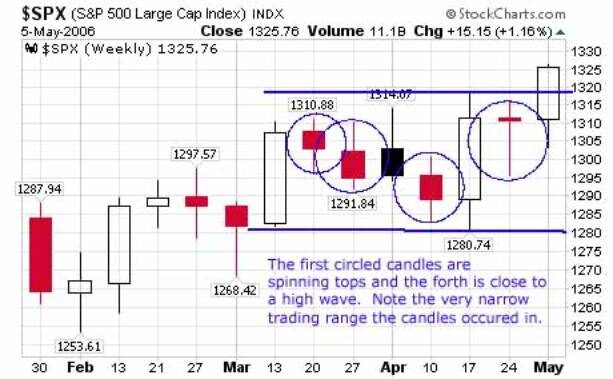What is a High Wave Candlestick?
The high wave candlestick has a very small real body, and it typifies a stock or index plagued by uncertainty. The spinning top has small upper and lower shadows, whereas in the high wave the shadows are longer, revealing more volatility.
Here is what the high wave candle looks like:

How Does a High Wave Candlestick Work?
High wave candlesticks portray situations where the market is having difficulty coming to a consensus on a security's value. They are indicative of a market in which uncertainty and indecision prevail. Neither the buyers nor the sellers have a clear sense of which direction the market will head. The forces of supply and demand are equally balanced.
If a high wave candle occurs on high volume, then it indicates the market's general confusion about the direction prices are headed.
Below you'll find a historical chart of the S&P 500. note that since early March there have been three candles that can be interpreted as spinning tops and one candle that was close to a doji. The doji had a small real body and was virtually a high wave. This collection of candles depicts a bull/bear war, with neither side being able to declare a decisive victory. The last candle, however, seems to resolve the indecision of the past several weeks.

Why Does a High Wave Candlestick Matter?
As the old cliche goes -- 'when in doubt, stay out.' The high wave candle expresses doubt and confusion on the part of the market. Until the situation becomes clear, traders should emphasize careful stock selection and minimize position size.



